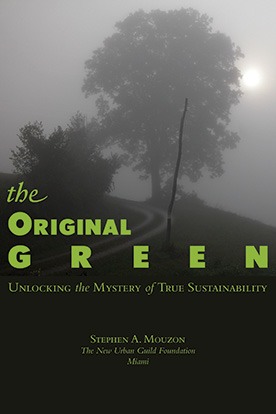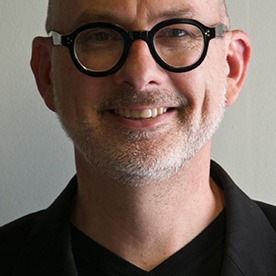
Is anyone here suffering?
The human comfort range has shrunk to its smallest size in human history over the past half-century. Our ancestors had a comfort range of probably 30 degrees Fahrenheit. Near 90 degrees, they might cool themselves with a hand-held fan. Near 60 degrees, they would put on an extra layer of clothes. Today, however, there are Thermostat Wars all over the US over 2 degrees. Don’t laugh... you likely have participated in some of them at some point yourself. And Jimmy Carter lost his re-election campaign in part because he famously asked Americans to wear sweaters and cut the thermostat down in winter to help with the energy crisis of that day. The sweater therefore became the only article of clothing to ever play a role in ending an American presidency.

Ask any mechanical engineer to describe the impact of a 30 degree comfort range versus a 2 degree comfort range. She will tell you that a 2 degree comfort range requires the conditioning equipment to run basically all the time, because outdoor temperatures are almost never within that 2 degree range. And if the equipment is going to be running almost all the time, why even have windows that are operable? So they seal up the buildings where you can’t ever open a window to catch a breeze.
A 30 degree range, on the other hand, means that there are several months per year when the air outside is within the comfort range at least part of the day. So if the building is designed cleverly enough, it can condition itself for most of the year in many places, requiring mechanical conditioning only in more extreme weather.

How do we expand the human comfort range again, getting it back close to where it has been for almost all of recorded human history? Carter’s approach of telling us what we ought to do is no more likely to work now than it did then, as discussed earlier in the Fate of Ought-To. People rarely do what they ought to do, and resent being told what they ought to do. But they often do what they want to do. So what’s the most effective way of assuring that people want to expand their comfort range?
The best known way is to entice them to go outdoors. As people spend more time outdoors, they become more acclimated to the local environment and need less full-body conditioning when they return indoors.
My own experience provides a good example. I moved to Miami in the fall of 2003. My home on Miami Beach is just a few blocks from my office, so I walk. Within a ten minute walk of my office, I can get to dozens of restaurants, several grocery stores, a hardware store, a drug store, my bank, my doctor, my accountant, and lots more. And it isn’t like walking alongside the highway, either... they are highly interesting walks through beautiful places.
Because I walked everywhere, cranking the car only a couple times per week, I quickly became so acclimated to the local environment during that first fall and winter, which is almost always mild in Miami. As springtime turned into summer, I noticed something strange: so long as I was in the shade and could feel a breeze, I was never uncomfortable. That is still true today, almost seven years after moving here: I have never been uncomfortable in Miami so long as there’s a breeze in the shade. And this is a place where the basketball team is named “the Heat.”

The difference between running the mechanical conditioning equipment all the time and cutting it off several months of the year is so big that it dwarfs any equipment efficiency increases we could hope for in the near future. So which is better: spending lots of money for slightly more efficient equipment that will have a small positive effect on energy use, or spending to create great outdoor public and private realms that will have a large positive effect on energy use, with the added bonus that people get great pleasure out of them?
~Steve Mouzon
*******
This post is part of the serialization of the second chapter of the Original Green [Unlocking the Mystery of True Sustainability]. The chapter is entitled “What Can We Do?” It describes principles upon which real sustainability can be based. This post is #4 in the top 10 items we can do.
Legacy Comments:
Wednesday, January 13, 2010 - 10:41 AM
Jeff B.
I met a young businessman at a development site on the Gulf Coast a couple of years ago during the summer. He got out of his big Lincoln SUV and left it running while we talked in the sun near a large field that was the subject of our conversation. Within about two minutes he suggested we get into the SUV because he had started sweating profusely. When I suggested we move instead about 10 feet into the shade of a large oak tree, he was genuinely shocked. And even more shocked when he realized it was perfectly comfortable in the shade on a 90-degree day.
Sometimes I think technology is just making Americans stupid and weak.
Tuesday, February 23, 2010 - 06:43 AM
Steve Mouzon
Exactly, Jeff! Being from the Deep South originally, I've had similar experiences. Amazing how much people sweat when they spend all their time indoors in air conditioning! And your comment about technology is spot-on: it makes life easier, but doesn't necessarily make us better. Often, as you note, it's quite the opposite.
+388+


